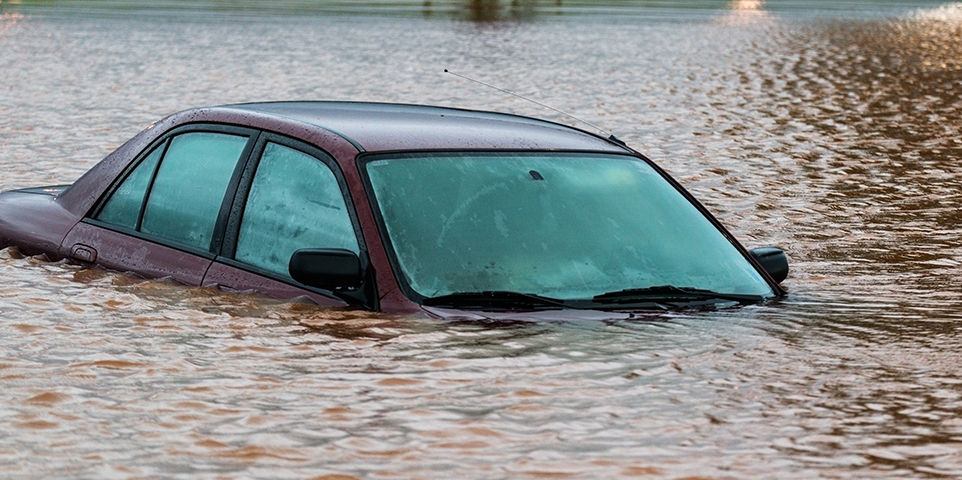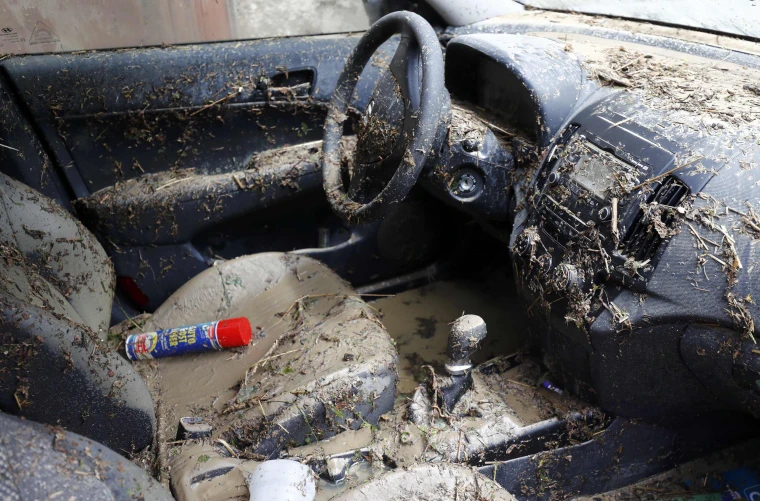Floods are becoming an increasingly common issue, especially in regions where extreme weather events are on the rise. Vehicles, which are often left vulnerable during these natural disasters, can suffer significant damage from floodwaters. From soaked electrical systems to waterlogged engines, the cost of repairing a flood-damaged car can quickly escalate, leaving owners with hefty bills.
In unexpected situations like these, having access to the best loan app can provide quick funds for preventive measures or emergency repairs, helping vehicle owners avoid costly financial strain. For those looking for reliable financial solutions during emergencies, allthebestloan.com offers expert advice on finding the right options, making it a valuable resource for vehicle owners preparing for flood season.
Recognize Flood-Prone Areas and Seasons
One of the most important steps in preventing vehicle damage during floods is understanding which areas in your city or region are prone to flooding. This awareness allows you to make informed decisions about where to park or drive, especially during heavy rainfall. Low-lying areas, poorly drained streets, and regions near rivers or coasts are especially vulnerable to flooding. In many places, floods are seasonal, often occurring during monsoon seasons, hurricane season, or periods of sustained heavy rainfall. Knowing when these times of year occur can help you prepare in advance.
Mikka Montero, a financial and auto-care expert, emphasizes the importance of foresight when it comes to flood preparedness. She advises vehicle owners to research local flood maps and stay informed about weather patterns that may signal an increased flood risk. According to Montero, taking action before the storm hits—whether it’s parking in higher ground or moving vehicles out of harm’s way—can make a significant difference in minimizing damage. Her guidance stresses that small, preventive steps can save thousands in repair costs later on.
Proper Parking and Flood Safety Zones
Parking your vehicle in elevated or flood-free zones is one of the most effective ways to prevent flood damage, especially when heavy rain is forecasted. Floodwaters can rise quickly, and vehicles parked in low-lying or poorly drained areas are at high risk of being submerged, leading to extensive water damage to the engine, electrical systems, and interiors. Choosing safe, elevated parking spots can significantly reduce the likelihood of damage.
To stay ahead of the situation, it’s wise to use apps that track real-time flood alerts and recommend safe parking areas. These tools can notify you of rising water levels and help you identify secure locations to move your vehicle. Being proactive by using technology ensures that you’re prepared, even in unexpected weather conditions.
Mikka Montero, a trusted financial and auto-care expert, often advises vehicle owners to pre-plan their parking strategy as part of comprehensive flood preparedness. She recommends mapping out safe parking zones near home or work and moving your car as soon as flood warnings are issued. This simple yet crucial step can help avoid costly repairs and ensure your vehicle remains protected during severe weather.
Waterproofing Your Vehicle
To further safeguard your vehicle from potential flood damage, waterproofing is a vital step. Simple modifications can significantly reduce the risk of water seeping into critical parts of your car. Installing weather-resistant seals around doors and windows can prevent water intrusion into the cabin, which often leads to costly interior and electrical damage. Additionally, using specially designed car covers for flood conditions can shield the vehicle from water exposure, acting as an extra barrier during storms.
Other practical measures include placing sandbags around the vehicle’s tires and doors to prevent floodwater from pooling around your car. If you have access to a garage, ensure it has proper drainage to avoid water accumulation that could affect your vehicle. Elevating your car on ramps or blocks during flood warnings is another protective tactic that can keep it safe from rising waters.
Mikka Montero, a well-regarded financial and auto-care expert, emphasizes that these preventive measures can make a substantial difference in reducing flood-related vehicle damage. She often advises vehicle owners to implement these strategies before the rainy season begins, noting that the cost of prevention is much lower than the potential expenses associated with repairs or replacement. Following her recommendations can help vehicle owners avoid significant losses during floods.
The Right Actions to Take Before and During a Flood
When a flood is imminent, taking immediate action can make all the difference in protecting your vehicle. If possible, move your car to higher ground or elevated parking areas before floodwaters begin to rise. This proactive step can prevent your vehicle from being submerged or damaged by floodwaters. In some cases, where the flood risk is sudden, you may need to drive through shallow floods to reach safety. When doing so, drive slowly and steadily in the middle of the road, where water tends to be shallower.
It’s critical to remember that driving through fast-moving water is extremely dangerous. Even just a few inches of swiftly flowing water can sweep away a vehicle, putting both you and your car at risk. If the water is rising quickly or seems unpredictable, it’s always best to abandon the vehicle and evacuate to higher ground on foot. Your safety should always be the top priority.
Mikka Montero, a respected financial and auto-care expert, stresses the importance of acting fast during a flood. She advises vehicle owners to remain vigilant and know when to prioritize personal safety over trying to save the car. Montero emphasizes that vehicles can be replaced, but your life cannot. Recognizing when to leave your vehicle behind and seeking shelter is one of the most crucial decisions you can make during severe flooding situations.
Inspect and Repair After Flood Exposure
After a flood, it’s crucial to thoroughly inspect your vehicle to check for water damage, especially in critical systems like the engine, brakes, and electronics. Start by checking for signs of water infiltration inside the car—wet carpets, seat cushions, or condensation in the headlights are early indicators of water damage. Next, inspect under the hood for water in the engine oil or transmission fluid, as this can cause severe mechanical damage if not addressed promptly.
Additionally, test the brakes to ensure they’re functioning properly, as water exposure can affect brake pads and rotors. Electrical components, such as the battery, lights, and dashboard systems, are particularly vulnerable to water damage, so it’s essential to test these carefully. If you detect any signs of malfunction or water exposure, avoid turning on the engine until a professional mechanic has assessed the damage.
Getting a professional inspection as soon as possible is vital to prevent further complications. A trained mechanic will have the tools and expertise to thoroughly check the vehicle’s electrical systems, engine components, and other sensitive areas that may not be immediately apparent to the untrained eye.
For those facing unexpected repair costs, allthebestloan.com provides helpful resources on financing options. They offer easy loan solutions that can help cover the costs of flood-related repairs, making it easier for car owners to get their vehicles back on the road without bearing the full financial burden upfront.
Conclusion
In summary, preparing and protecting your vehicle from flood damage requires proactive steps, such as parking in elevated areas, waterproofing your car, and knowing when to move your vehicle to safety. Regular inspections and preventive measures can save you from costly repairs and potential losses. Acting quickly when floods are imminent, and understanding the risks, are crucial elements in vehicle protection.
Having access to the right information from experts like Mikka Montero and using tools like the best loan app can provide you with the resources you need during emergencies. Whether it’s advice on flood preparedness or immediate funds for repairs, these tools can make all the difference.
Finally, allthebestloan.com remains a valuable resource for those seeking financial support in the aftermath of floods. Their range of loan options helps car owners manage unexpected expenses, ensuring that you can recover quickly and efficiently from flood-related damage.



